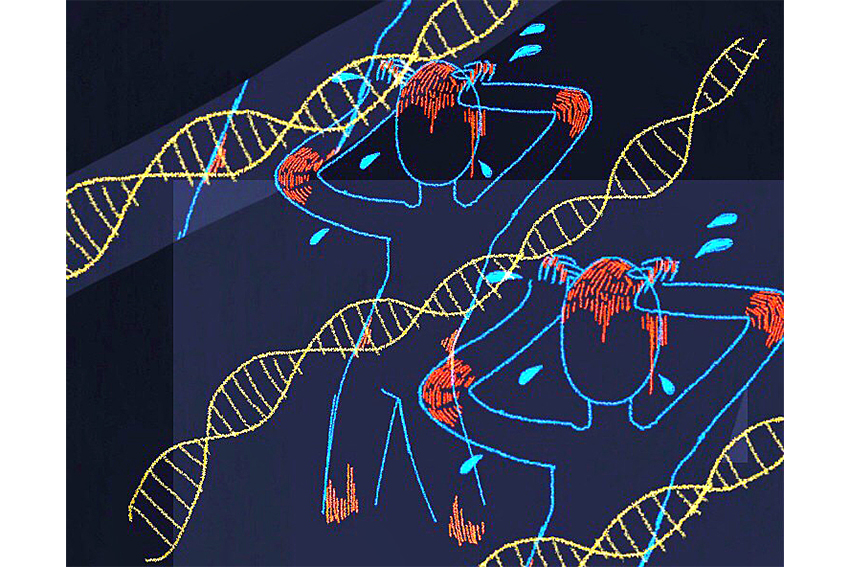Conventional wisdom says you are what you eat, but for lemurs, it’s who they hang out with that influences the composition of their gut microbiomes, UT researchers have found.
The gut microbiome refers to the tens of trillions of microorganisms, such as bacteria, that live in the digestive tract. The research, led by Ph.D. student Amanda Perofsky as part of her dissertation work, used data collected by members of the anthropology department, including professors Rebecca Lewis and Anthony Di Fiore and graduate student Laura Abondano. The team investigated a wild population of Verreaux’s sifaka, a species of lemur in Kirindy Mitea National Park in Madagascar, using gene sequencing and analysis of the lemurs’ social networks.
“I had this wealth of behavioral data at my disposal,” Perofsky said. “And not just their social behavior, but also data on their feeding ecology and (on) which sifaka are related to each other. So, I combined all these different sources of data to look at potential factors that may be influencing variation in their gut microbiomes.”
Research into the gut microbiome is relatively new, Perofsky said. There are still a lot of unknowns regarding the functions of each individual species of microorganisms residing in the digestive system, she said, but a technique called DNA sequencing has allowed researchers to quickly identify the various bacteria.
“We found that lemurs that are closer together in the social network tend to have more similar gut microbiomes,” Perofsky said. “It really is their social group that is driving their gut microbiome composition.”
To understand the importance of social groups in this lemur population, Lewis has been observing their social interactions since 2007. They live in extremely tight-knit social groups that are relatively isolated from the other groups.
“So if you’re in the same social group as another lemur, you’re hanging out with that lemur all the time, regardless of (whether) you’re best friends with it or not,” Perofsky said. “Within social groups, certain sifaka prefer to hang out with each other more than others, or groom each other more than others, but still, it really seems that the group is what’s driving the gut microbiome composition.”
There was also a positive trend between gut microbiome composition and both grooming relationships and frequency of scent marking, though the health implications of that are not certain.
The report explains that the community structure of the lemurs governs the transmission of microorganisms in their guts. It suggests that the links between social connectedness and gut microbiomes may be an evolutionary benefit of living in tight-knit groups.
Di Fiore said that primatologists have been studying the implications of diverse social groups in primates for a long time, but have not yet focused on the microbiome.
“I think that’s an important turn in biology recently,” Di Fiore said. “And if you scale that up and think about humans in the global ecosystem, the health of the population in a particular area can have ramifications well beyond that.”
Perofsky said that her research is not focused on implications for humans but on the impacts of social connectedness in general.
“Even though bacteria that are (a) normal part of the gut don’t cause negative symptoms in most cases, they still provide a lot of insight for how pathogens may be spread or how social relationships might influence health in these animals, and then by extension, humans,” Perofsky said. “I’m now interested in, not necessarily the negative influence of social relationships and how they spread disease, but how social relationships are beneficial for animal health.”





















